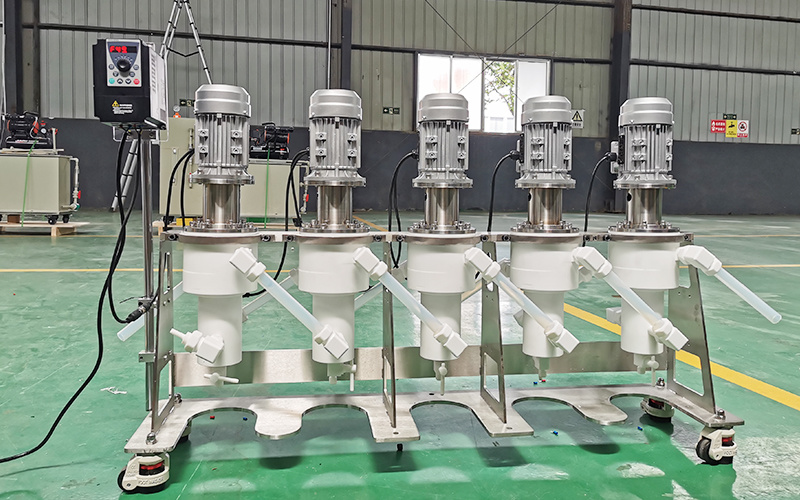News Center
social responsibility

hot line: +86 13255260239
mailbox: yaodongwang65@gmail.com
address: Room 702A11, Building 1, Jinan Science and Technology Innovation Center, Guangdong Pu Science and Technology, 500 meters southeast of the intersection of Kejia Road and Chunxiu Road, High-tech Zone, Jinan City, Shandong Province
hot line: +86 13255260239
mailbox: yaodongwang65@gmail.com
address: Room 702A11, Building 1, Jinan Science and Technology Innovation Center, Guangdong Pu Science and Technology, 500 meters southeast of the intersection of Kejia Road and Chunxiu Road, High-tech Zone, Jinan City, Shandong Province



![]() Release date:2024.09.23
Release date:2024.09.23
![]() Page view:177
Page view:177
With the rapid development of new energy vehicles, the recycling of power batteries has increasingly become an important issue. This year's National Two sessions are highly concerned about this issue, to explore how to promote the healthy development of the waste battery recycling industry, it is urgent for the whole industry to systematically think and comb.

The power battery recycling industry chain covers a number of links, including battery application, recycling channels, echelon utilization, scrap, disassembly - pretreatment - material extraction and material reuse. Usually, the service life of the power battery is 5 to 8 years, when the battery capacity decayed to less than 80%, can no longer effectively meet the needs of new energy vehicles, it needs to be retired or recycled, but at present, there is no mandatory requirement for the decommissioning or recycling of the power battery in China.

There are two main paths for power battery recycling: for batteries that meet the degree of energy attenuation (remaining capacity of 20% to 80%), they can be used in echelon; For batteries that cannot be used in echelon (with less than 20% remaining capacity), they are disassembled and recycled.
The core of power battery recycling lies in the recovery and reuse of positive electrode materials with high value. For the components of relatively low value such as negative electrode, electrolyte and diaphragm, the industrialization process of recycling is gradually advancing. At present, the recovery technology of positive electrode materials mainly includes physical recovery, fire recovery and wet recovery, and the core difference between these three methods is that the key process of extracting valuable metals is different.
Physical recovery Through the waste power battery internal components (such as electrode active substances, fluid collection and battery housing) through a series of processes such as crushing, screening, magnetic separation, fine grinding and classification, to obtain valuable products, and then the next step of recycling. Its core process is the material repair after grinding and screening, representing enterprises such as Saidemei. The advantages are full components, automatic, pollution-free disassembly, especially suitable for lithium iron phosphate batteries, good economy; The disadvantage is that the artificial strength is large, and the recovery of other valuable metals is more difficult.
Fire recovery does not directly realize the recovery of various battery materials or metals through solution and other media, mainly including mechanical separation and high temperature electrolysis. It is necessary to strip off the battery shell, mix the battery core with coke and limestone, and get metal lithium, cobalt, nickel, aluminum and other combined carbon alloy by reduction roasting, fluorine and phosphorus in the electrolyte are solidified in the slag, used as an additive for building materials or concrete, and finally for deep processing. The core process of fire recovery is high temperature pyrolysis, which represents enterprises such as Zhongwei Cycle and Meike. The advantage is that the process is simple and more heavy metals such as mercury, nickel and zinc can be recovered; The disadvantage is that the yield is low, the energy consumption is high, and certain waste pollution will be generated.
The waste battery is disassembled and pre-treated and dissolved in acid-base solution to extract some valuable metal elements, and then the remaining valuable metals are extracted by ion exchange method and electrodeposition, which mainly includes three methods: chemical precipitation, solvent extraction and ion exchange. Among them, the centrifugal solvent extraction process is widely used, because of its high recovery of metal elements and high purity of reprepared products, which is recognized by the industry. Centrifugal solvent extraction process has been applied in power battery recovery process such as lithium iron phosphate and ternary lithium battery. It has the characteristics of high extraction efficiency, low energy consumption and low operating cost. According to the typical enterprise in the industry, Shandong Lianxi company, the current maximum processing capacity of a single machine has exceeded 100m³/h, which can well meet the surging market demand for decommissioned batteries.

Power battery recycling will continue to drive the development and optimization of related technologies, and centrifugal solvent extraction is expected to play a greater role in future recycling processes.
Hot spot
Welcome to contact you by phone
Working hours(8:30-20:30)Enquiry hotline
+86 13255260239
Pay attention to customer service wechat
Working hours(8:30-20:30)

